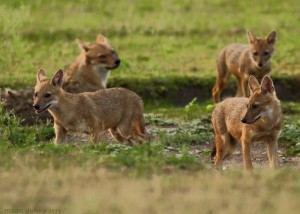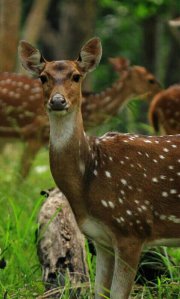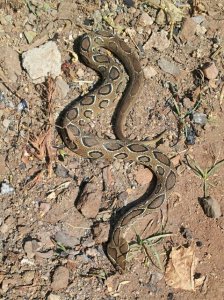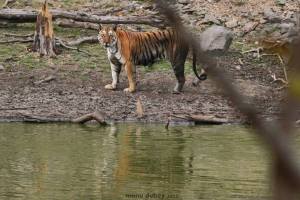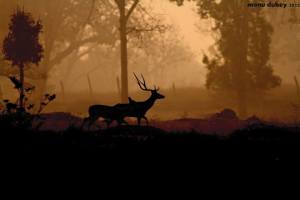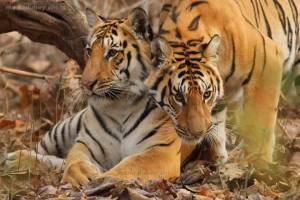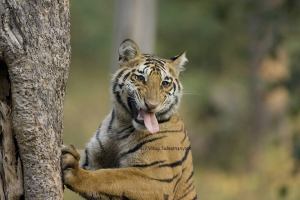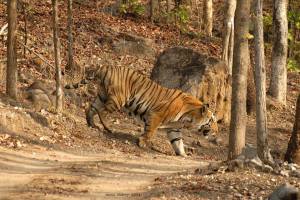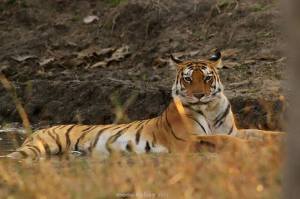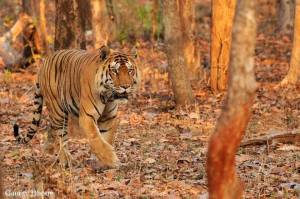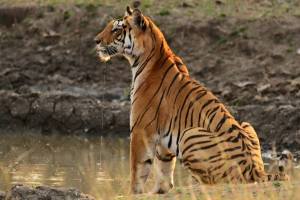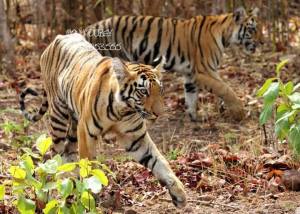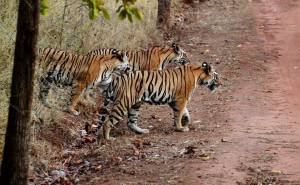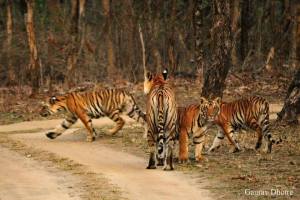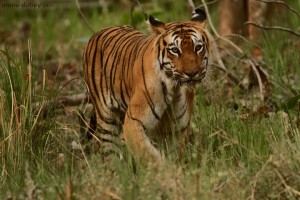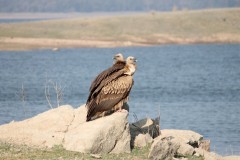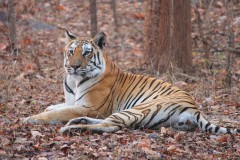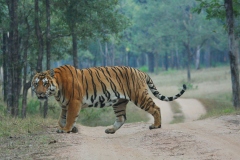Situated in prime forests of Seoni and Chhindwara, Pench National Park is a tiger land. The enchanting forests were the settings for Lord Kipling’s Jungle Book. The forests are mixed deciduous type with very robust food factor.

Pench River is the lifeline of the ecosystem and traverses through Eastern End of the park. The river is dammed in order to create a massive reservoir which is a habitat for wintering and resident wetland birds. Nevertheless the river supports the wilderness and its shores are ideal for tiger sightings.
There are a large number of lakes as well that support the life forms in this reserve. Pench Tiger Reserve is home to many wild animals including the Bengal Tiger. The destination is also rich in bird life. Both wetland and forest birds are found here. The best time for birding is during the winters when migrants augment the stock. The river system supports many ducks like the Northern Pintail, Brahminy Duck. Lesser Whistling Teal, Comb Duck, Red Crested Pochard and Wigeon. Among the shore birds one can see Painted Stork, Wooly Necked Stork, Lesser Adjutant Stork, Common Snipe, Egrets, Cormorants, Snake Bird, Sandpipers, Stints, Black Stilts and so on.
Birding at Pench should be conducted in the core area of the tiger reserve, periphery and large tanks in the surroundings. The villages and the fields are also good for watching birds around the National Parks. Targeted water birds can be seen along the River Banks and the Totlah Doh Dam. The forest birds are to be seen best in the mixed forest zones, grasslands and shrubs along the river bed. In the forest binoculars with eight times magnification is helpful while for water birds one will need a good spotting scope.
This is the place to discover interesting avian species as not enough birding has taken place. Some of the interesting species found here are the Malabar Pied Horn bill, Indian Pitta, Osprey, Palas Fish Eagle, Gray Headed Fish Eagle (migrants), Laggar Falcon, Pergrine Flacon, Eurasian Hobby, Serpent Eagle and Crested Hawk Eagle. Other birds to look out for are the Orange Headed Thrush, Red Spurfowl, Red Jungle Fowl, Painted Spur Fowl, Painted Francolin, Indian Scimitar Babbler and many more. There are many pipits and warblers found in winters along with sandpipers, wagtails, stints and shanks. The flycatchers like Verditer, Black Naped Monarch, Asian Paradise Flycatcher, Asian Brown Flycatcher and Tickell’s Blue Flycatchers can be seen here frequently. Among the interesting perching birds are the prinias, tailorbird, Iora, Baya, munias, sparrows and many more.
For foreigners and birding enthusiasts from other regions a birding guide is required. Most of the luxury hotels in Pench employ in house naturalists. Most of the naturalists are good birders. A good birding guide is a must. It is good to read about birds found here before arrival. There is a limit to entry of vehicles in the park hence the gate entry should be booked in advance. You can request your hotel to book the number of gate entries you wish visit during your stay.
Kanha National Park now separated is also known as Kipling Country. It is home to the magnificent tiger that dominates the landscape. Besides the big cats more than twenty two mammals, two hundred fifty species of birds are found in the tiger reserve.

